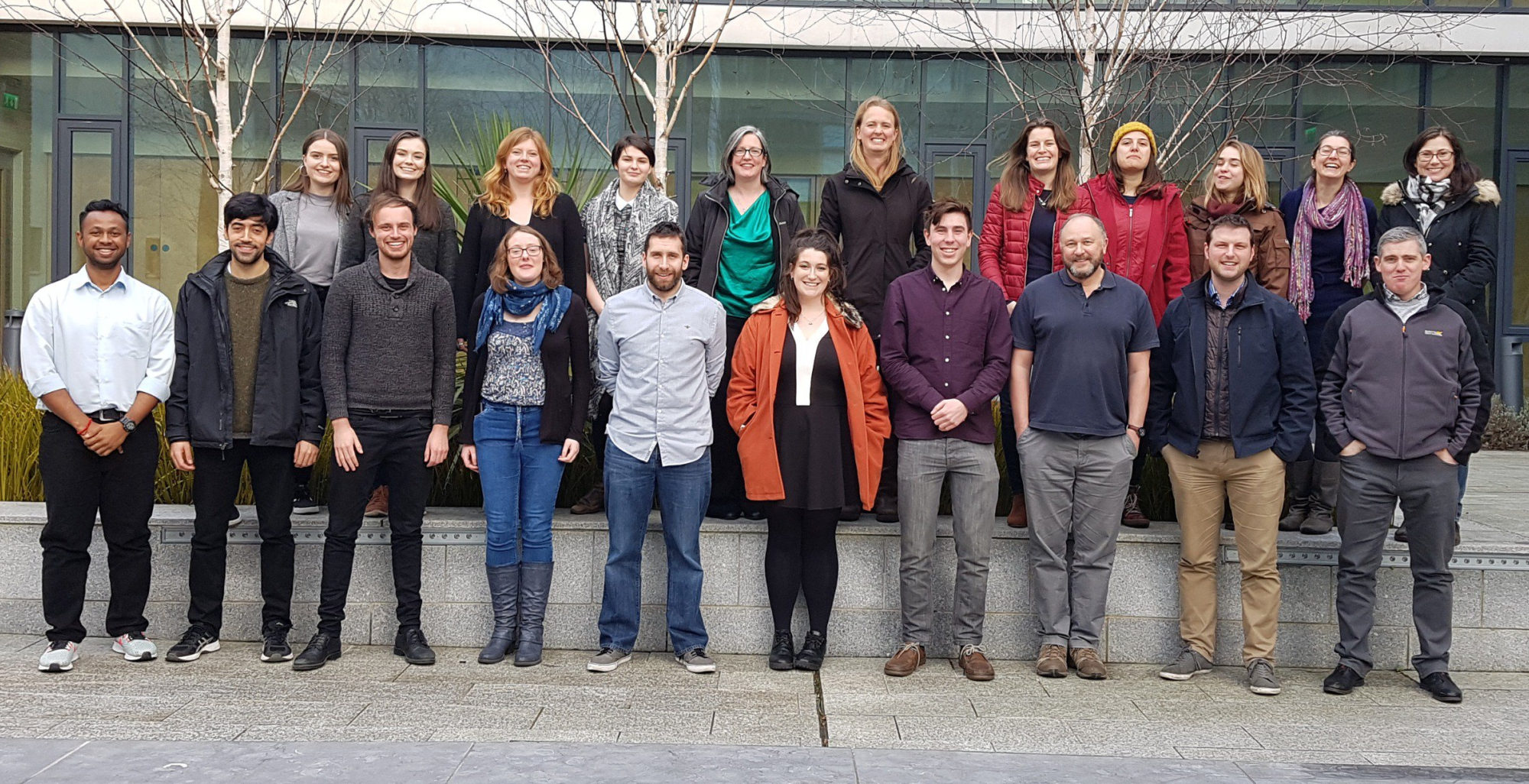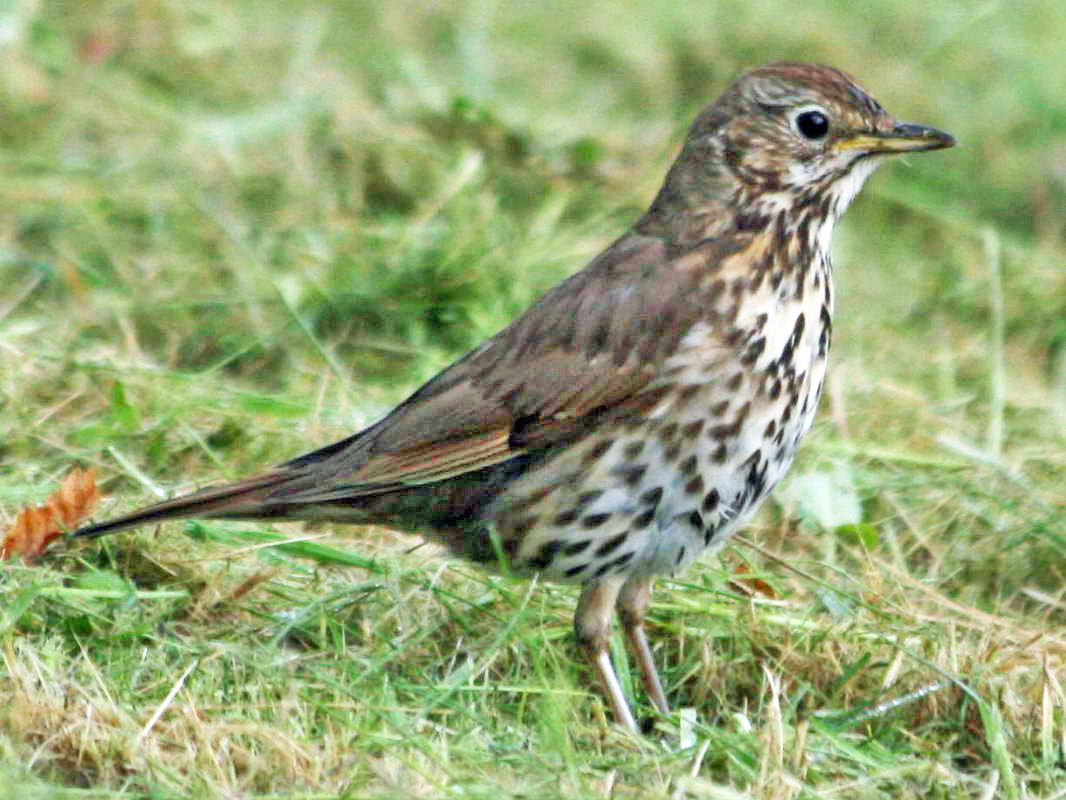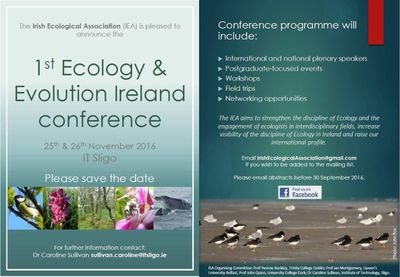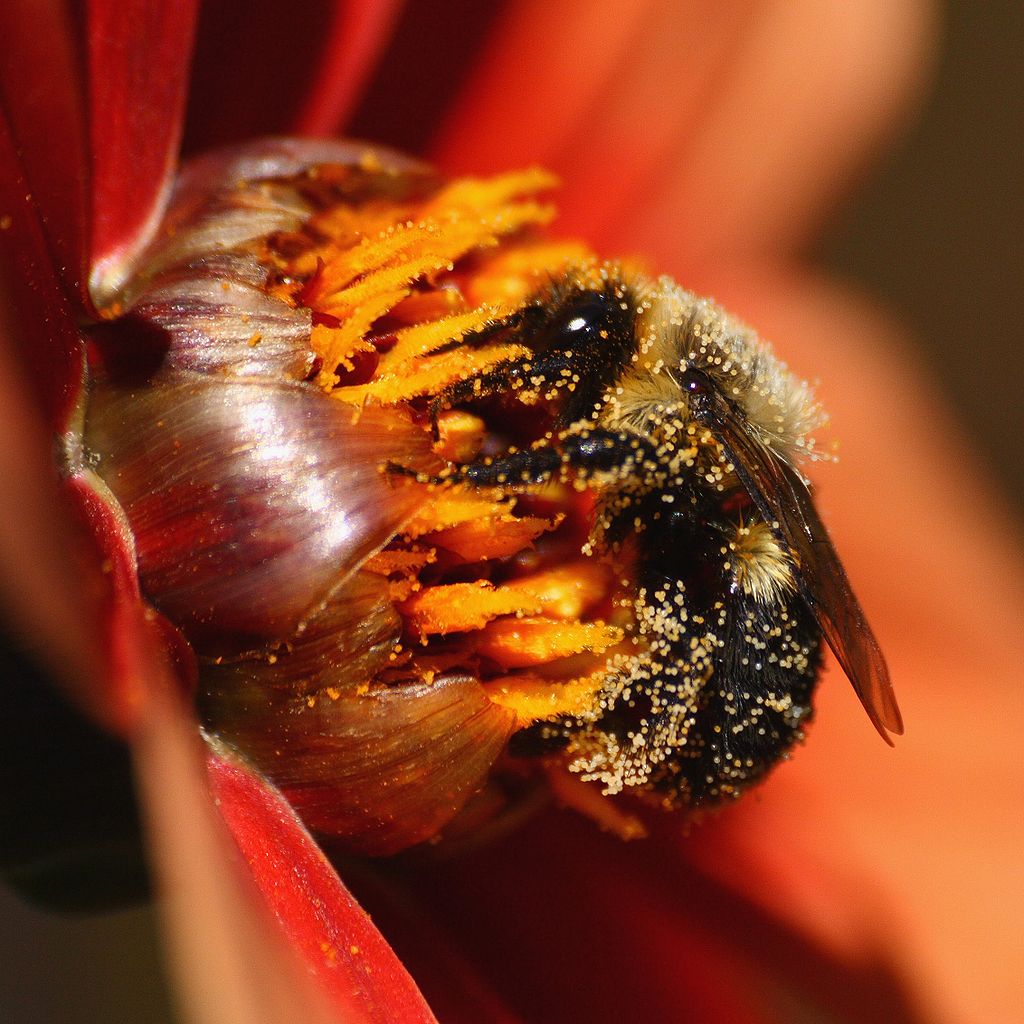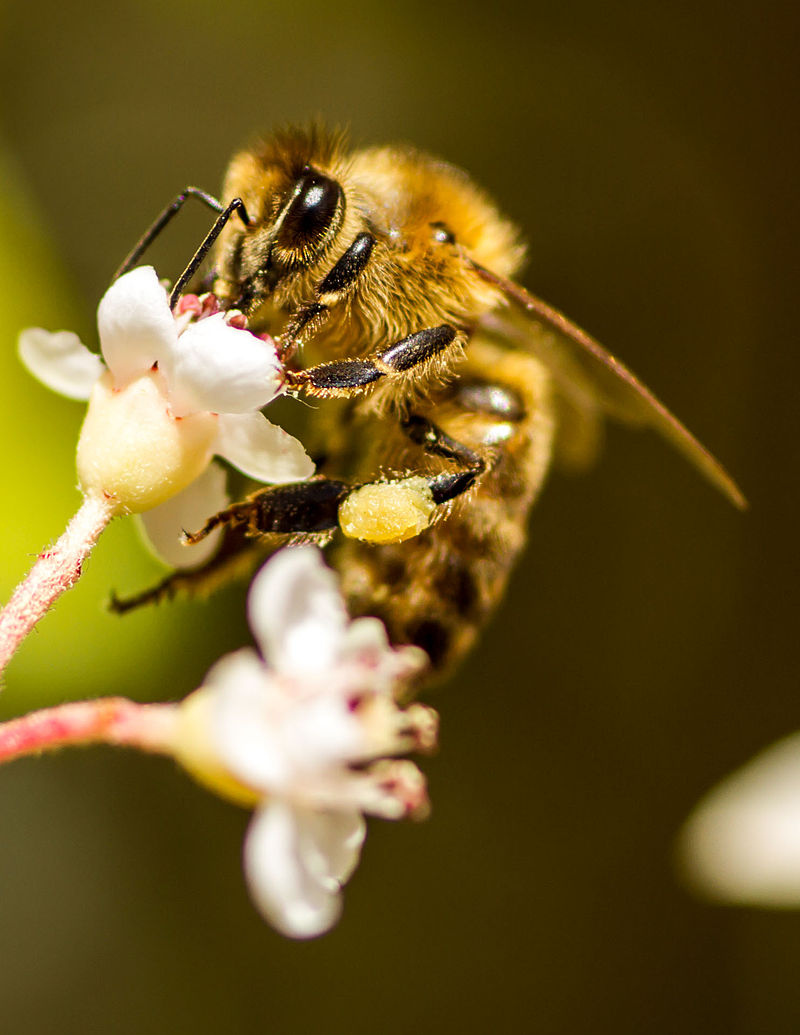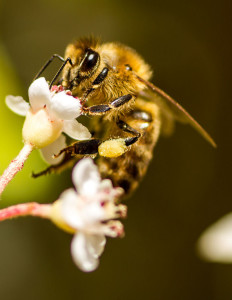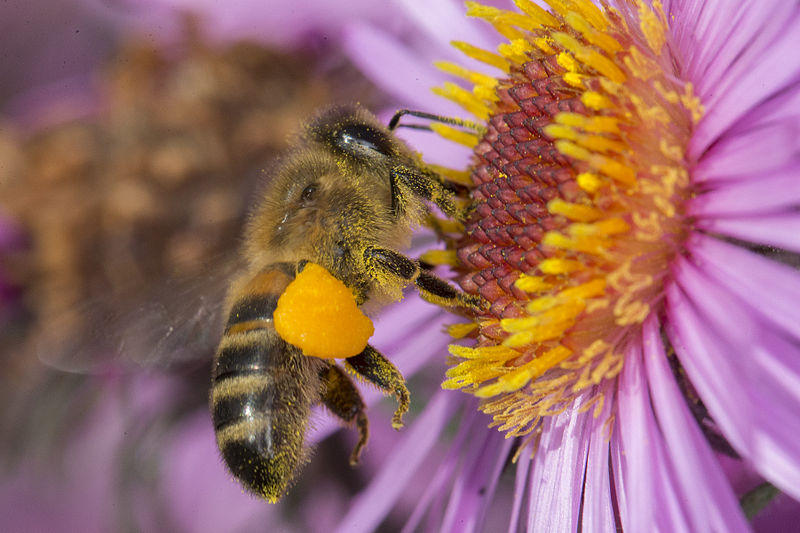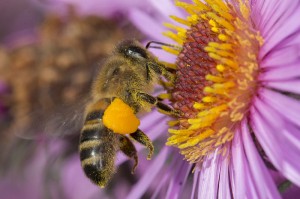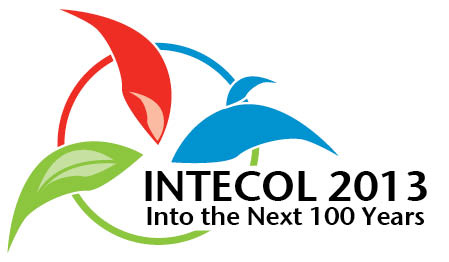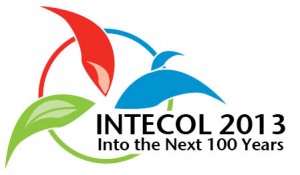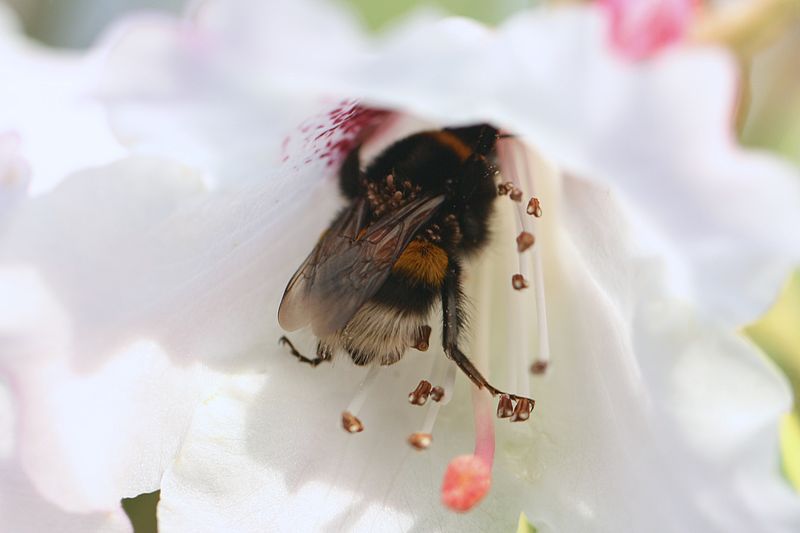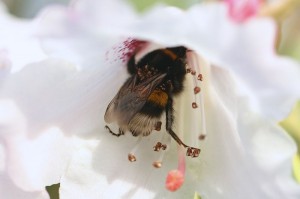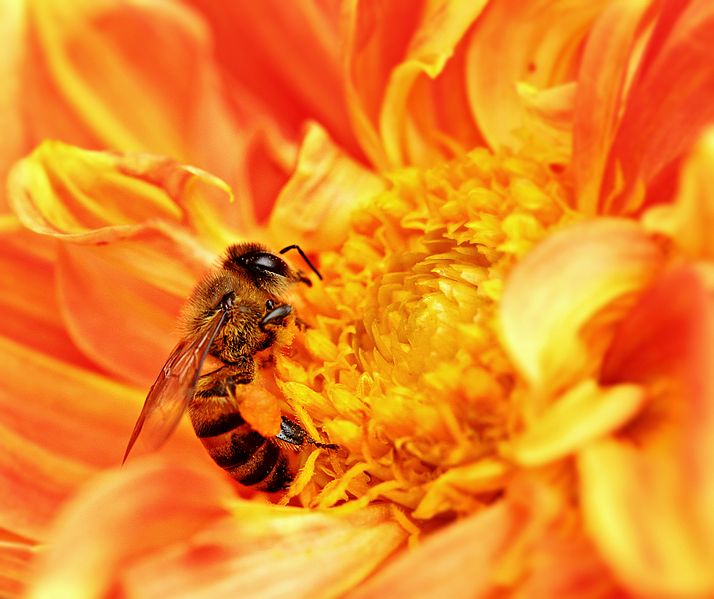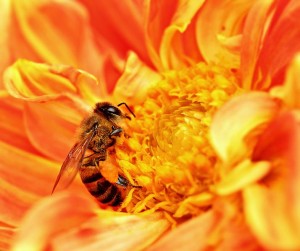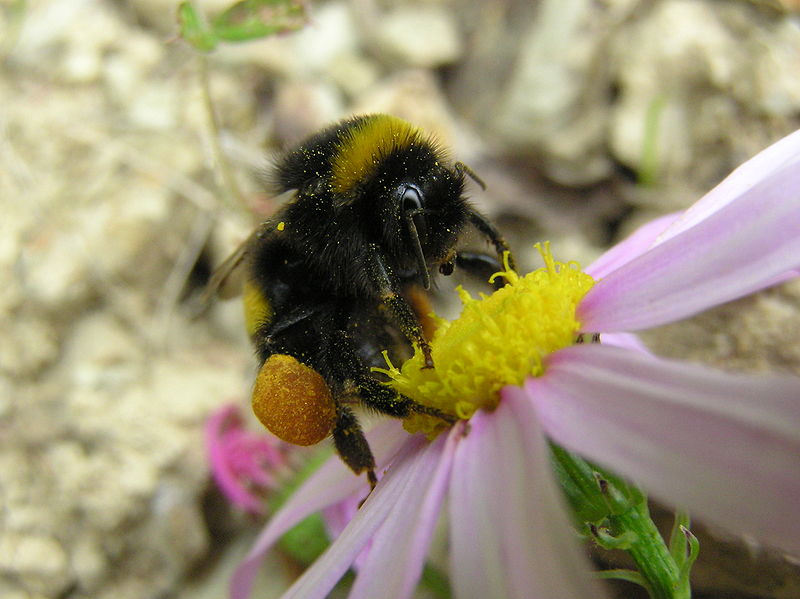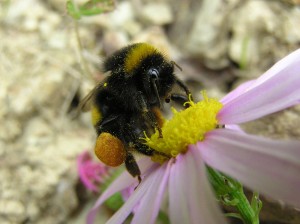Following on from the successful meeting last year, we held our Second Annual Irish Pollinator Research Network Meeting on 18th January 2019. This year, 22 researchers from TCD, UCD, DCU, MU, TUD and QUB gathered at DCU’s Water Institute for 16 oral presentations and discussions about pollinator, pollination and pollen research currently underway in Ireland. Continue reading “Irish Pollinator Research Network goes from strength to strength…”
Research haikus
Last month, the Zoology Department’s Dr. David Kelly launched his first book of Japanese short form poetry, Hammerscale from the Thrush’s Anvil. At the launch of the book, David invited us in the audience to try our hand at writing our own haikus.
Taking him up on his challenge, and taking inspiration from his book, a few of us in the School of Natural Sciences have penned our own poems based on our areas of study. We even have a contribution from David Kelly himself!
Trying not to sacrifice coherency at the alter of syllable number was a rather new struggle for most of us, but we managed and, I’d like to think, emerged with a greater appreciation for the poets in our midst. Read on for our science-y foray into the arts!
(Paula Tierney @_ptierney)
_______________ Continue reading “Research haikus”
Ecology & Science in Ireland: the inaugural meeting of the Irish Ecological Association
In the years to come, 140 ecologists working in Ireland will look back with fond memories of being part of the inaugural meeting of the Irish Ecological Association (24th-26th November). We will remember hard-hitting plenaries, compelling oral presentations, data-rich posters, influential workshops and the formation of the IEA’s first committee. The lively social events might be harder for some of us to remember… Continue reading “Ecology & Science in Ireland: the inaugural meeting of the Irish Ecological Association”
Shall we kill all our bees?
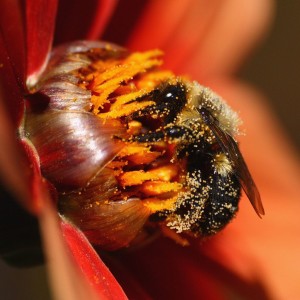 “Kill all the bees!!”, the modest proposal of Prof. Paul Sutton from University of South Australia is a provocative attempt to convince economic rationalists to finally start counting what really counts.
“Kill all the bees!!”, the modest proposal of Prof. Paul Sutton from University of South Australia is a provocative attempt to convince economic rationalists to finally start counting what really counts.
If all the bees were to go extinct we will have to replace them by, for example, hand-pollinating our crops. That means employment, economic growth in terms of GDP and tax revenues: very good for the Economy. Continue reading “Shall we kill all our bees?”
Mixed Messages, Pesticide Pestilence and Pollinator Populations
“We’re getting mixed messages from scientists about the effects of neonicotinoids on bees” – I have heard this from several sources, including a very senior civil servant in the UK and from an intensive tillage farmer in Ireland. A recent article in the US media says pretty much the same thing. An article in the Guardian last week entitled “UK drew wrong conclusion from its neonicotinoids study, scientist says”, reports on Dave Goulson’s reanalysis of the Food & Environment Research Agency (FERA)’s own data, but draws the opposite conclusion.
So why is there confusion on bee decline and the role of neonicotinoids? I believe it’s down to several factors:
1. “Bees” are a diverse taxonomic group of insects, including the well-known eusocial honeybee Apis mellifera, the familiar bumblebees in the genus Bombus, plus hundreds of other species of bee, which have quite different life histories and ecologies, most of which do not form social colonies. When talking about bees, we need to be clear about which ones we are discussing. If everyone is clear about which taxonomic group they are talking about, this could cut down considerably on the confusion. (By the way, the Guardian used a picture of honeybees as the image accompanying their article on bumblebees).
2. Honeybees are managed by beekeepers. If a colony dies out (especially over winter in temperate countries), it is replaced by splitting a strong colony in spring. If the colony is sick, it is treated. When we talk about honeybee decline, we are either referring to colony losses (i.e. colonies dying out, which can be caused by a range of factors, especially parasites and diseases, and is highly spatio-temporally variable); OR we are referring to the fact that there are fewer beekeepers out there, or that each one is keeping fewer colonies. The point is, when colonies die out, beekeepers can restock and the total number of honeybee colonies depends on the activity of beekeepers. This is why there appears to be no decline in honeybees in the US. This is not the case for wild bees.
3. Eusocial bees, by the very nature of their colonial societies, are to some extent buffered against environmental stochasticity and pressures. If a few hundred honeybees are killed whilst out of the hive foraging during the summer, it may have little impact on the colony, because there are 50,000 or more honeybees left in the hive. This may be a reason why lab-based findings cannot always be scaled up when replicated at field level. Measuring effects at the colony-level is also another problem. A range of different experimental approaches has led to mixed conclusions on the effects of neonicotinoids on honeybees.
4. A huge number of independent peer-reviewed studies have shown negative lethal and sub-lethal effects of neonicotinoids on wild bees and other non-target organisms (e.g. see review by Pisa et al. 2015), in laboratory, and semi-field studies. Realistic field-level studies on the other hand are challenging methodologically: some bees have large foraging ranges and so studies must be conducted over large areas; pesticide free “control” sites are very hard to find; and wild bees are subject to a range of interacting pressures (loss of forage resources, parasites and disease, cocktails of pesticides, use of managed bees for pollination purposes, climate change…), and disentangling the effects of these pressures in a field experiment is hard. However, those few studies that have been conducted properly appear to support the lab and semi-field findings.
5. The media band-wagon… When the media polarise environmental issues, it’s very hard for people to make an informed decision – instead of crediting the general public with the intelligence to understand that the environment is highly variable in both space and time, and that ecological systems and interactions within them are highly complex, issues are presented as cut-and-dried in one direction or another. Thus the confusion is maintained, so that the next big news story, that contradicts the previous one, can have a bigger impact.
There shouldn’t be any confusion – neonicotinoids have sufficient negative impacts on non-target organisms for us to be concerned about their widespread and often prophylactic use (e.g. as seed dressings). We should also worry about the wider environmental impacts of pesticides like neonicotinoids – how persistent they are, how they get into the soil and water-courses and affect other organisms that provide essential ecosystem services. And we shouldn’t just be concerned about neonicotinoids – the massive cocktail of chemicals we intentionally and accidentally unleash on the natural environment could have long-term and very damaging effects to our natural capital. Including bees.
Author: Jane Stout, stoutj[at]tcd.ie
Photo credit: wikimedia commons
Seminar series highlights: Phil Stevenson
As mentioned previously on the blog, Andrew Jackson and I started a new module this year called “Research Comprehension”. The module revolves around our Evolutionary Biology and Ecology seminar series and the continuous assessment for the module is in the form of blog posts discussing these seminars. We posted a selection of these earlier in the term, but now that the students have had their final degree marks we wanted to post the blogs with the best marks. This means there are more blog posts for some seminars than for others, though we’ve avoided reposting anything we’ve posted previously. We hope you enjoy reading them, and of course congratulations to all the students of the class of 2014! – Natalie
Here’s articles from Maura Judge and Chris Parsisson inspired by Professor Phil Stevenson‘s seminar, “Pollinator fidelity in coffee and citrus: is it all just sex and drugs?” Continue reading “Seminar series highlights: Phil Stevenson”
Big is better!
Reflections on geeking it up at Intecol 2013 by Jane Stout
Having not been to a 2000+ delegate, multi-session, international conference for several years, I was a bit nervous in the run up to INTECOL2013 “Into the next 100 years: advancing ecology and making it count” – would it be possible to see all the talks, read all the posters and meet all the people I planned to? (Answer: no). Would I remember everyone and would anyone remember me from past meetings? (Answer: some yes, some no – thank goodness for name tags). Could I follow in the footsteps of Katie Taylor, the last girl from Bray to take the stage at the London ExCeL Arena, and take the Olympic gold? (Answer: no; note to self: must try harder). But I needn’t have worried – INTECOL 2013 was excellent: it was well organised, the quality of the science was top-notch, the sun shone, and the whole thing was very inspiring and humbling. Continue reading “Big is better!”
What I did this summer: Tortured some bees
Among the multiple pressures currently driving decline in bee populations, little attention has been given to naturally occurring toxins in plant nectar. We carried out research this summer on invasive Rhododendron ponticum, a plant that contains neurotoxins in its floral nectar. We found this toxin to be lethal to honeybees, but apparently benign to the plant’s main pollinators, bumblebees. Differential responses by bee species to toxins and other pressures means we need to consider bee decline on a species by species basis. Continue reading “What I did this summer: Tortured some bees”
The popularity of bees
Because my research often uses bees as the study subject, friends and family are always forwarding links to news and culture that concerns these fascinating creatures. Let me list for you some of my favourites: I found this article about the debate surrounding the ban on neonicotinoids within the EU on twitter. On a lighter note, a performance group teamed up with a group of monks at Glenstal Abbey to compose a “Song of the bees” based on scientific recordings and data from honeybees. A friend on facebook sent me this comic, which describes the seeming absurdity of honeybee workers sacrificing themselves for their hives. Another facebook find was this spoof article which points out that we could probably solve the problem of bee decline if bees privatised. Finally, friends and family in Philadelphia informed me that Drexel University recently named its new department the BEES department! That last one is a little deceiving because BEES stands for Department of Biodiversity, Earth and Environmental Science, so they don’t actually focus on the study of bees. I think it’s still significant that the department’s acronym features our little buzzing friends though. In addition to these references, the birthday and Christmas gifts I’ve received over the past three years include bee embroidered hand towels, wine glasses with bees painted on them, a bracelet with a bee charm, and a stuffed bee .
What is apparent from all of these links and articles (and the availability of the plethora of bee paraphernalia my lovely friends and family continue to buy for me), is that bees are incredibly popular right now. And I can’t help but ask myself, what is the attraction?
My first question was am I just noticing these references more because I started studying bees in the last few years? Honestly if you asked me to point out the difference between a honeybee and a bumblebee before I went to college, I’m sure I wouldn’t have been able to do it. But it turns out it’s not personal bias, not according to the scientific literature anyway. The graph below is the result of a search in Web of Science for papers that contain the word “bee” or “bees” in the topic. Clearly there has been increased interest in bees since the 1940’s. In the last few years the publications on bees have been especially numerous, for example there were 1796 records in 2012.
Okay, so bees are being studied more. But why does the public seem to be so intrigued by these organisms? Why do people love bees?
I have a few thoughts- I’ll start with the obvious:
1.) Bees make honey.
Or so many think. In reality, not all bees make honey. The honey-like substance that bumblebees produce would not be fit for consumption- they don’t keep their colonies nice and neat like honeybees do, so you’d be likely to get a mouth full of bacteria or bee larvae in your honey if it came from a bumblebee. But everyone thinks all bees make honey, and after all, honey is delicious.
2.) The social nature of bees.
The average person may not know much about solitary bees or the differences in the life cycles of bee species, but usually they can tell you that honeybees have a queen. People also commonly know that the queen bee is responsible for producing all the rest of the bees, and that the rest of the bees in the colony will fight to the death to protect her. I’m not trying to dive too deeply into psychology here, but I think that the apparent altruism of bees attracts people to them and makes them a more sympathetic organism than we would normally consider something with a sting. People also like the concept of a “superorganism.”
3.) The “busy bee”
If you’ve ever watched a bee in the springtime foraging on a flower it’s clear that they are working hard. The work ethic of bees is impressive! I think people like that bees put in a hard day’s work, collecting food for themselves and their brood. It makes us think kindly of them, the working class insect.
4.) The ecosystem service
Maybe my first three reasons seem a bit silly and have left you unconvinced, so I will end with a more scientific explanation. We’ve known for some time that bees make excellent pollinators, and pollination is an important ecosystem service. In 2006 Science published two studies describing declines in pollinators in Europe and North America. These findings were compounded by the emergence of colony collapse disorder just a year or so later, leading to intense fear that our helpful honeybees were experiencing declines in population that they simply wouldn’t be able to recover from. The next question was what will be the impact of declining bee populations on food security? Turns out it’s rather significant. Studies have shown that the global economic value of pollination is over €153 billion. Furthermore, a study in March demonstrated that honeybees cannot replace the value of pollination services from wild pollinators; we can’t just worry about the honeybees, wild bees are important to increasing yields as well. Food security is not something we tend to take lightly, so our pollinators have intrinsic value. This helps explain the incredible media coverage bees have been receiving lately, especially regarding the European ban of neonicotinoids, a class of insecticides that have been shown to be harmful to bees.
I wonder though, how many people know the facts about how important bees are to the ecosystem service of pollination and therefore food security? How many people really like them because they are fuzzy, make sweet honey, and are hard workers? I suppose you could argue that it doesn’t matter why people are attracted to bees, it’s positive regardless because it encourages money to be spent on research into why they are declining and how we can conserve their populations. I think it’s helpful to try to understand why bees have become a sort of flagship species. That way we can better understand what traits cause humans to assign intrinsic value to organisms for future conservation work.
Author
Erin Jo Tiedeken: tiedekee[at]tcd.ie
Photo credit
wikimedia commons
Bees and biofuels….what’s the buzz?
As oil prices sore and the future of world energy is uncertain, there is rising demand for alternatives to fossil fuels. From solar energy to wind to algae fuel and biodigestion, the alternatives are numerous. One alternative that has received substantial media attention is the use of bioenergy which involves the production of energy from crops including maize, sugarcane, elephant grass and oilseed rape which are grown specifically for energy purposes.
However, the debate over bioenergy crops is often heated. Do they compete with food crops and therefore increase prices in an already stretched market? Do bioenergy crops result in the destruction of tropical rainforest to clear new areas for farmland? And are bioenergy crops even carbon neutral to begin with?
One debate that has been investigated by researchers in Trinity as part of the Simbiosys project is whether bioenergy crops can have impacts on biodiversity – the animals and plants that live on and in farmland. Not only are these animals and plants an important part of our heritage, but they are the pollinators of our food crops, the insects that control agricultural pests and the organisms that help provide us with clean water and air. With two-thirds of Irelands land area used for farming, any changes in farming practice are likely to have knock-on impacts on biodiversity.
A study recently published in the Journal of Applied Ecology investigated how growing bioenergy crops impacts the bees and other pollinating insects that pollinate wild flowers, apples, berries, oilseed rape, clover and many other crops here in Ireland (in fact pollinators are required for approximately 1/3 of all the food we eat). It was found that although different types of insect responded differently, there were no decreases of pollinators in bioenergy crop fields in comparison to their conventional farming alternative. And for some pollinator groups such as the small solitary bees, the introduction of small amounts of different crops into agricultural areas may actually be beneficial.
However, bioenergy crops did not provide the stable nesting conditions needed for pollinators; almost all bumblebees chose to nest in the field margins and hedgerows surrounding the fields. Field margins and hedgerows also provided habitat for large numbers of other insects. The study concluded that small amounts of bioenergy production on existing farmland may provide a diversity of habitats for pollinating insects, but that changes in levels of production in the future may have different effects. Hedgerows and field margins should also be maintained during bioenergy production as they are important nesting and forage sites for pollinating insects.
Although bioenergy crops in their current form seem like good news for bees, the future may be less certain. Growing these crops over larger areas rather than in individual fields, or the replacement of forests or meadows rather than existing arable (tilled) land, may have very different effects. With EU targets of 20% energy from renewable sources by 2020, and bioenergy incentives for farmers, we can expect further changes in this developing sector over the next few years.
Author
stanleyd[at]
Photo credit
Dara Stanley

